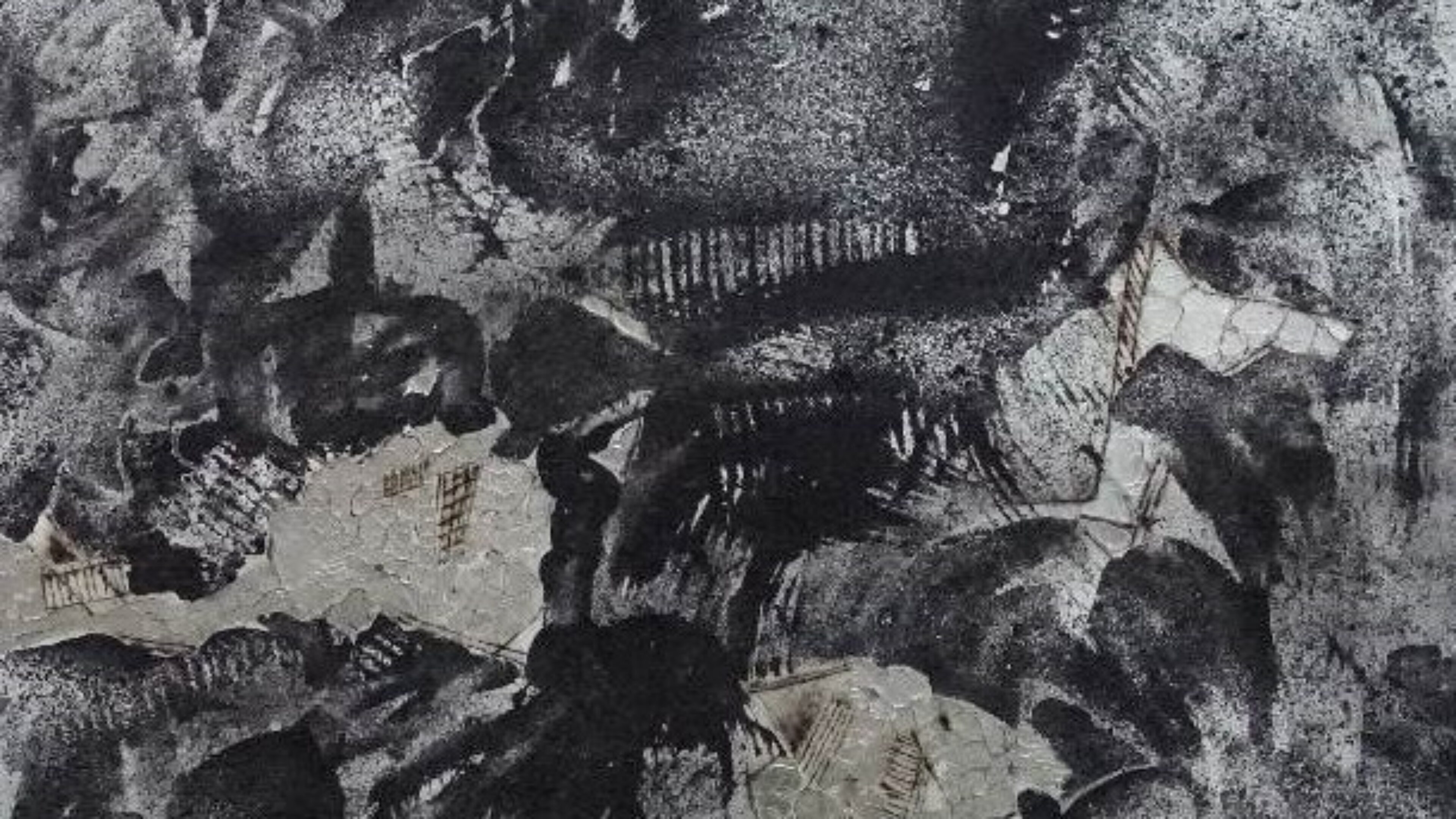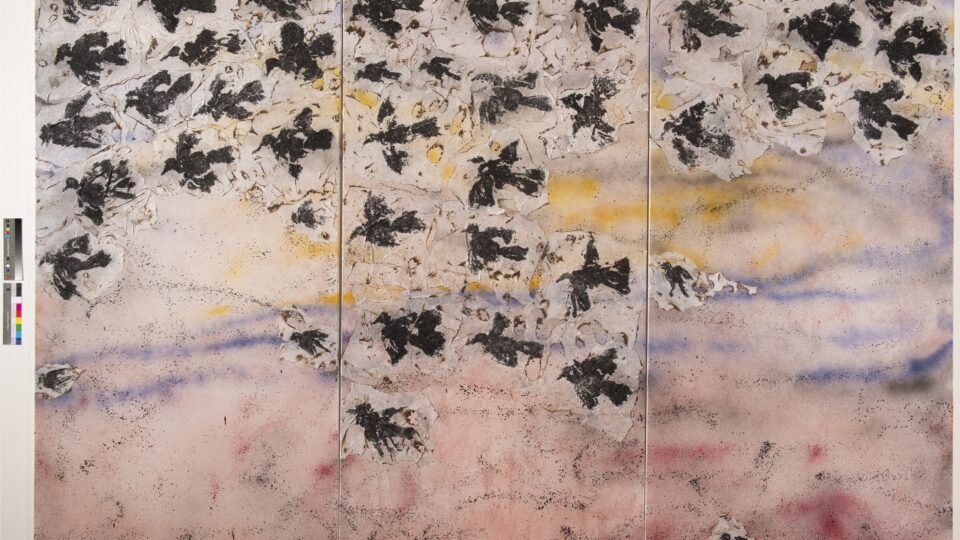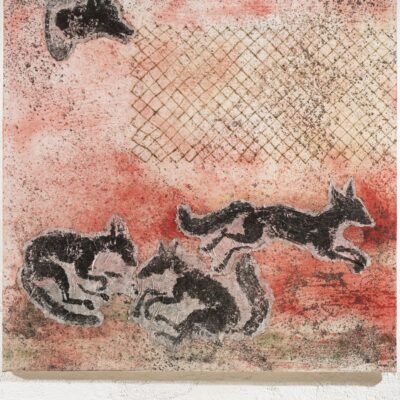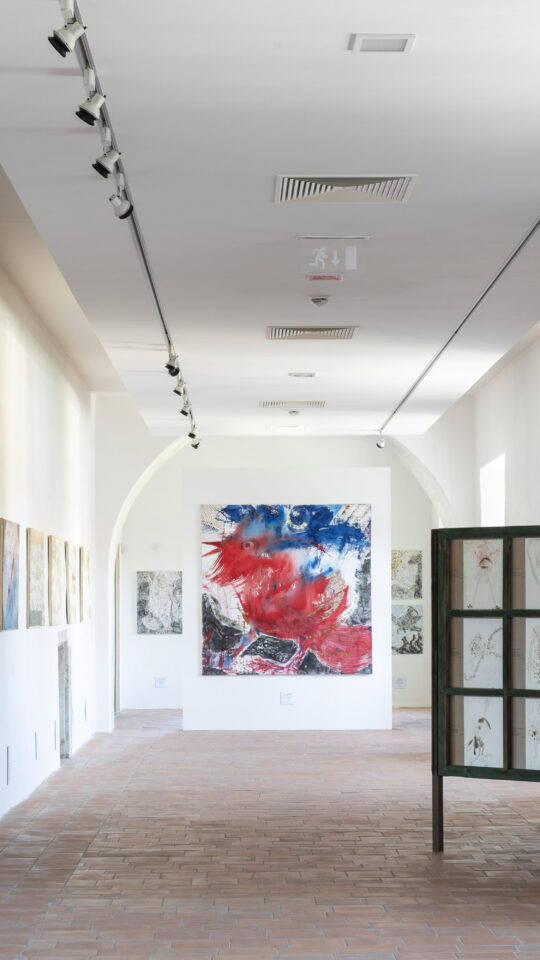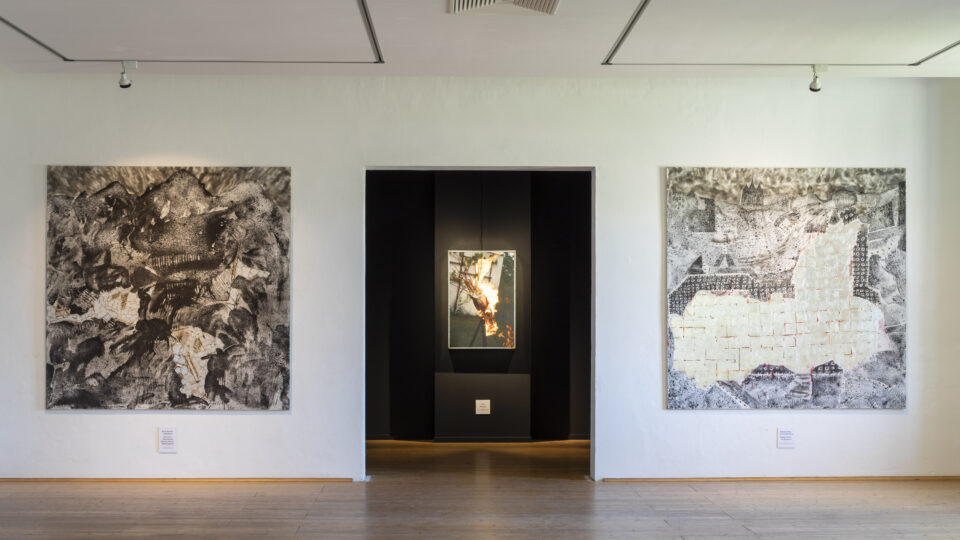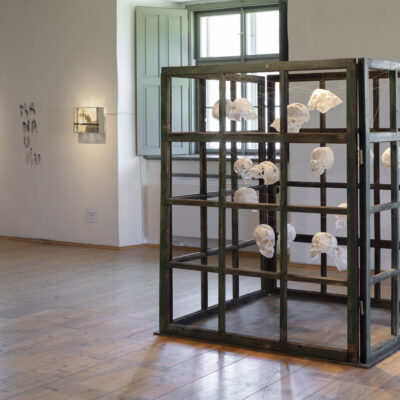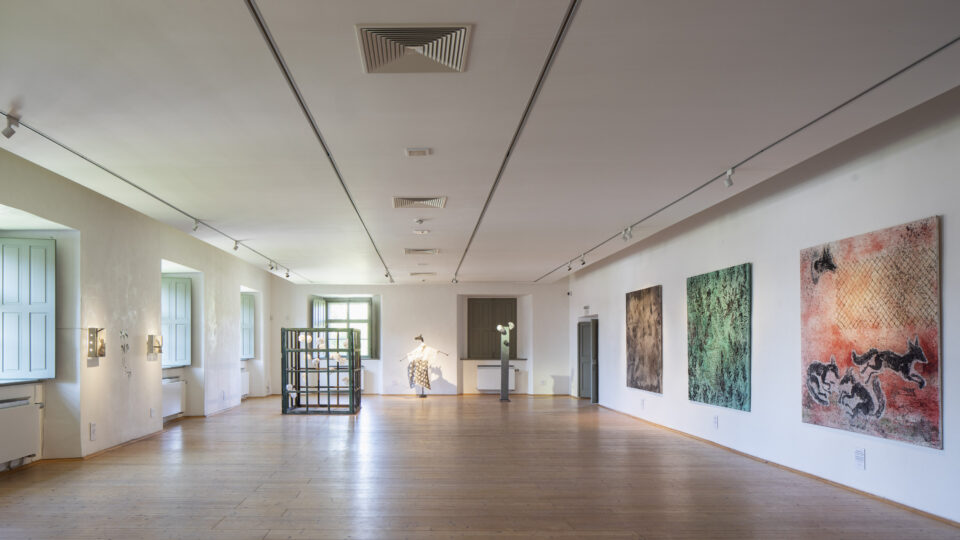Painter, draughtsman, photographer, multimedia artist, performance artist and university teacher Svatopluk Klimeš (1944) shifts traditional media into the realm of experimentation. Since the 1960s, he has used fire as a part of the creative process. The element of fire and the use of ash in his paintings allows him to artistically and metaphorically thematise the subject of ephemerality and the act of leaving traces while also exploring the traces left in the memory of a place and the history of a civilisation. The act of burning and scorching and the associated destruction of the material possess an element of transformation, creation and the birth of something new. Klimeš uses the archetype of the legendary Phoenix, which dies in flame and is born of ash, as a metaphor for a hopeful vision for today’s threatened world.
His art, which is often of a narrative character and sometimes lightened by the use of humour, tries to comprehend the essence of the flow of time. He explores various facets of history and mythology while touching on experienced events, specific places, and the subject of death.
The exhibition focuses in particular on Kutná Hora, which inspired Klimeš to hold the exhibition in the first place and also to create several of the works in it. Fascinated by the Kutná Hora Illumination, which depicts the mining and processing of silver ore, he explores how human activity has left its traces beneath the earth’s surface. He also honours the repeatedly rebuilt and renovated Church of St Barbara. His site-specific installation on the subjects of ephemerality and vanity (memento mori) is balanced out by the Phoenix as a symbol of transformation and rebirth – and thus of hope. Klimeš’s tendency to consider the broader contexts and to cross the boundaries separating artistic genres was inspired by the music of classical European composers and led him to create drawings that communicate visually with the Japanese poetic form known as the haiku.
The exhibition at GASK presents the full range of his work, reflecting the processuality present in images painted with ash and fire, in his installations, in illuminated photographic installations, and in his videos and performances.
